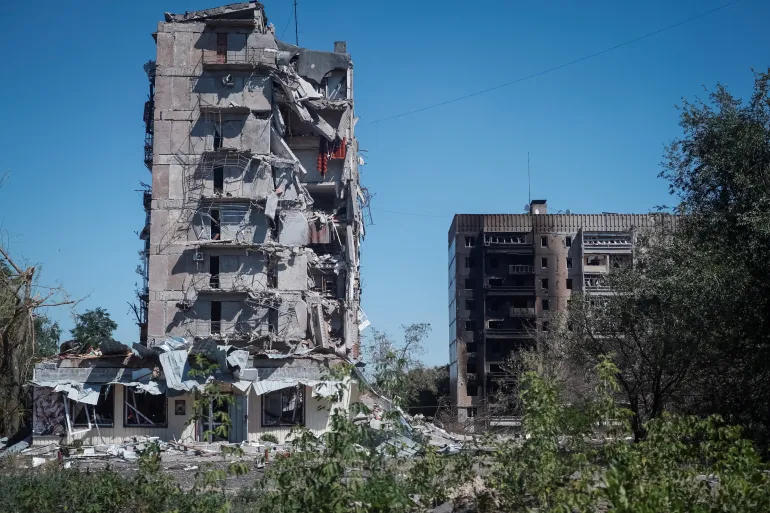Russian forces have entered Pokrovski, a major defensive bastion in eastern Ukraine that had resisted for over a year. With this breakthrough, Russian troops now control the heart of the city, signaling a significant shift in the conflict.
Ukrainian defenders, including elite units such as the Azov battalion, had been deployed to protect this vital stronghold. Their presence, however, left other fronts vulnerable, allowing Russian advances further south into Dnipropetrovsk and Zaporizhzhia regions.
After months of intense fighting, Russian troops have captured the southwestern section of Pokrovski, including areas surrounding the train station—a crucial logistical hub for thousands of Ukrainian families fleeing cities such as Avdeevka, Bakhmut, Chasiv Yar, and Toretsk over the past two years. The last train left on September 5, 2024, and the station is now under Russian control.
Reports and drone footage depict devastation across the city, with civilian casualties among rubble and destroyed buildings. Allegations of atrocities reminiscent of Bucha have emerged, though verification is ongoing. Many residents refused evacuation despite constant bombardment, leaving Pokrovski partially converted into a concrete graveyard.
Before the war, 60,000 people lived in Pokrovski, with another 60,000 in nearby Myrnograd, a mining city now under heavy Russian pressure. Ukrainian forces still hold positions, but logistical routes have collapsed, leaving only limited night-time field passages. Any tactical withdrawal would be extremely challenging.
Diplomatic pressures are mounting on President Volodymyr Zelensky. Former U.S. President Donald Trump urges surrender, while Vladimir Putin demands the Donbass and a demilitarized zone. Zelensky refuses to concede without NATO membership or binding American guarantees, which Trump has not offered. In exchange, Putin offers to relinquish other occupied areas in Zaporizhzhia and Kherson, though boundaries remain undefined.
Putin’s strategy is clear: surrender the remaining Ukrainian strongholds in Donbass, and he will halt bombardments; refusal will result in further bloodshed. Luhansk is already fully under Russian control, while cities such as Donetsk, Kramatorsk, and Sloviansk—key targets—remain in Ukrainian hands.
If Zelensky concedes Donbass, Russia would extend control to the Dnipro and Zaporizhzhia fronts, gaining a symbolic victory that would solidify Crimea’s recognition and control over Donbass and parts of Zaporizhzhia, Kherson, Dnipropetrovsk, Kharkiv, and Sumy. Removal of sanctions and international normalization would make this a major strategic win for Moscow, albeit at the cost of thousands of lives.
Several Ukrainian fortresses are now surrounded or under direct assault, including Pokrovski, Myrnograd, Siversk, Kupyansk, Lyman, Vovchansk, and Kostiantynivka. Infantry numbers dwindle, and the situation remains critical as Russian forces press their advantage.







